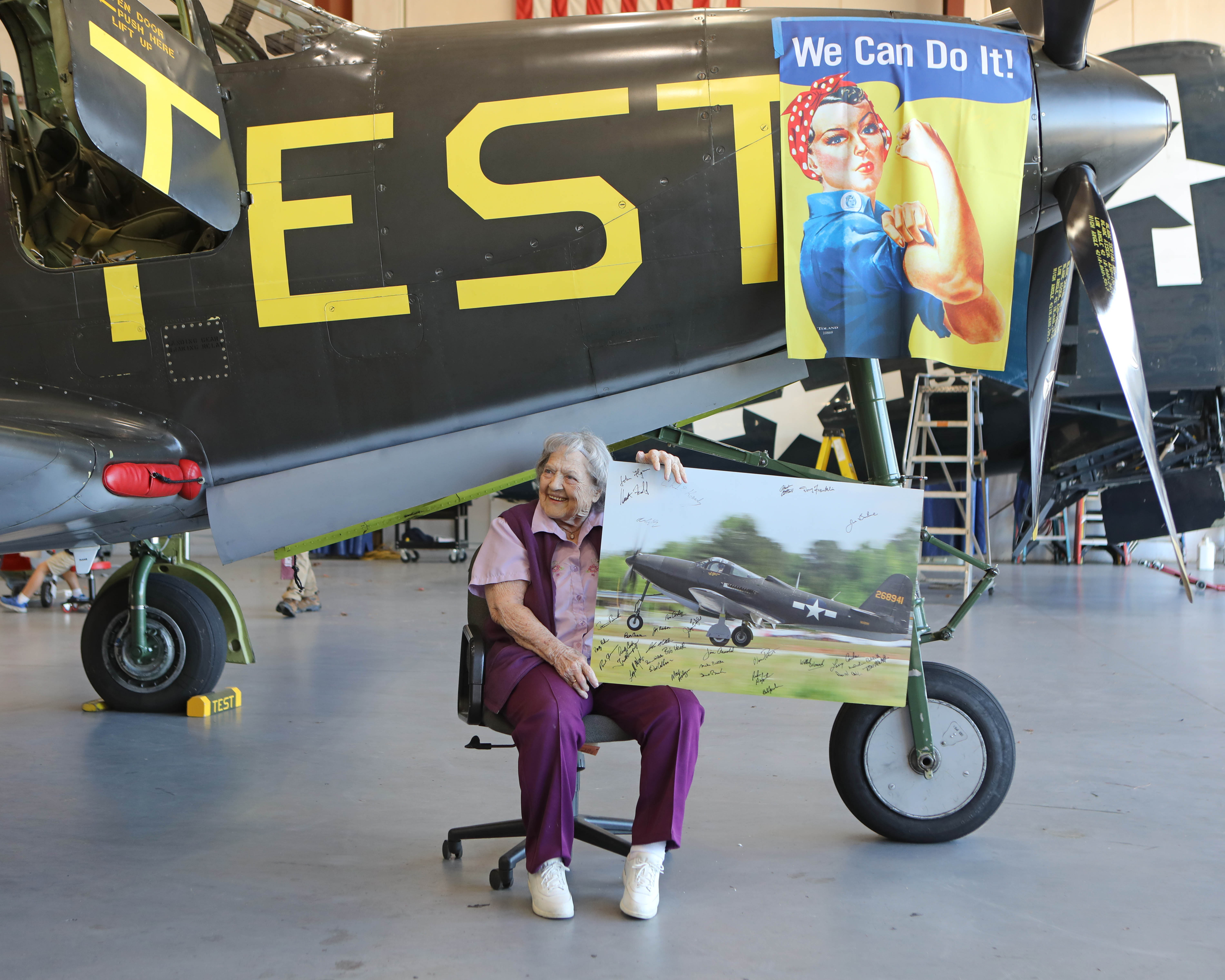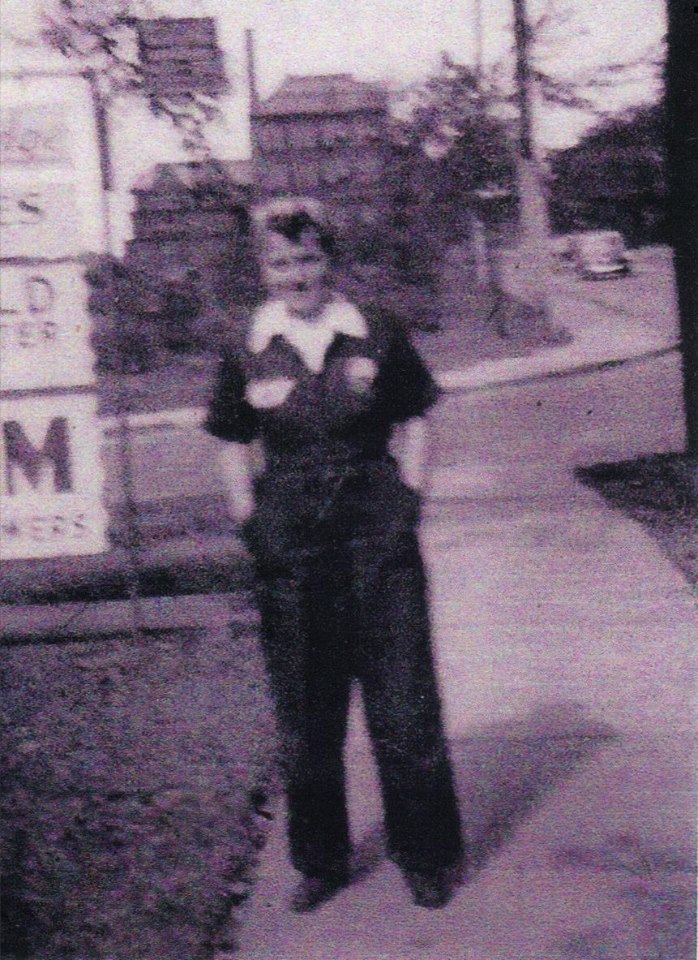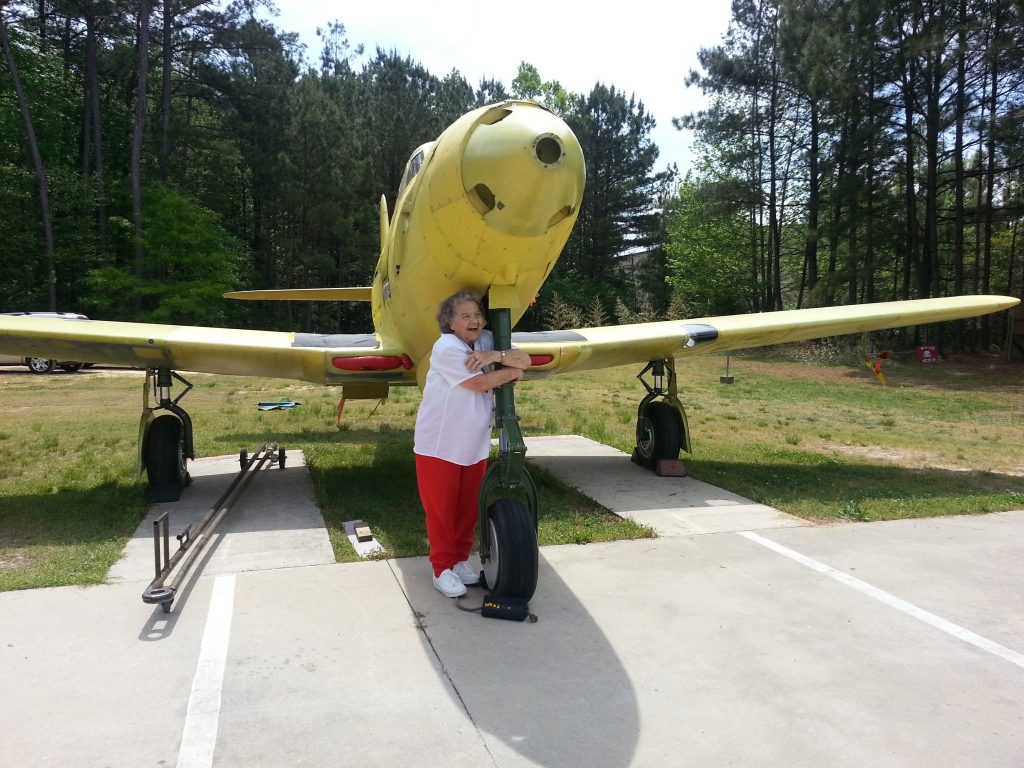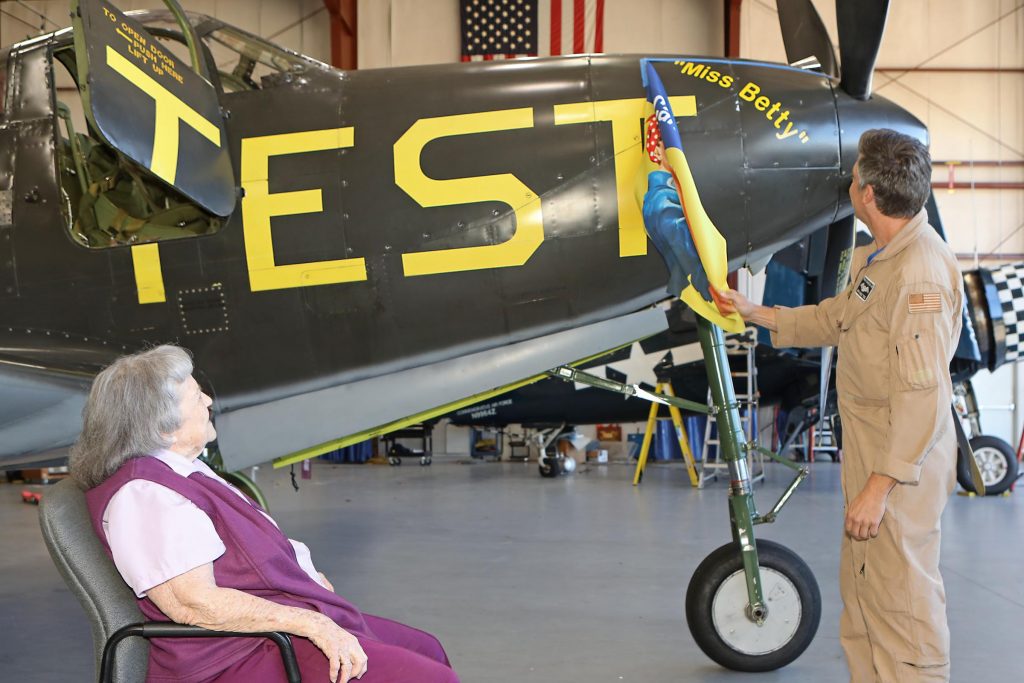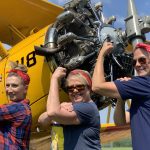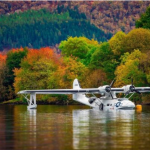By Steve Forsyth, CAF Dixie Wing Public Information Officer
Betty Bishop could never have known that her WWII aircraft factory work when she was 18 would bring her a hero’s honor in 2020. Surrounded by a small crowd and numerous cameras, Betty watched in November as the Commemorative Air Force Dixie Wing unveiled the nose of its restored P-63 Kingcobra, with yellow paint exclaiming the aircraft’s new name, “Miss Betty.”
Betty’s story started in 1943 when she joined the ranks of the burgeoning population of Rosie the Riveters, the thousands of women who filled the workforce in shipyards and factories to power the United States’ Arsenal of Democracy.
Betty graduated from Tidioute, PA, High School in 1943, after waiting a couple of months until she turned 18 years old, she hopped a bus for Niagara Falls where her high school buddy, Anne McKown, was already employed by the Bell Aircraft Corporation. Betty once there didn’t waste any time and immediately applied and was accepted after a couple of weeks of orientation.
Betty was initially assigned to Department 53 where the P-39 Airacobra was assembled. The Bell P-39 Airacobra was one of the principal American fighter aircraft in service when the United States entered World War II. Betty was given the job of fitting “belly cowls” to the under section of the airplane. The job was accomplished by filing, shaping, fitting and attaching the cowls. She soon learned – and so did her supervisor – that Betty wasn’t meant to be a “body man” and wasted more material than she used!
Our Rosie remained in Department 53 long enough to ignore a rule – that was to use a chuck key to remove a bit from the drill. It was easier to bump it on the catwalk – so she thought – and drove a splinter half way up her finger under the nail. First time she ever passed out!
Betty was transferred to Department 63 where she started working on the P-63 Kingcobra. The Bell P–63 Kingcobra was an American fighter aircraft developed by Bell Aircraft during World War II. Based on the preceding Bell P-39 Airacobra, the P–63’s design incorporated suggestions from P-39 pilots and was superior to its predecessor in virtually all respects.
Betty was the only girl on the “Landing Gear Gang”, with 21 men working on the line. But everyone soon realized that Betty was very much needed. Her hand was the only one small enough to shim the struts through the small hole in the wing! Additionally, to this important task, Betty was in charge to bleed and secure the airplane brakes. One hundred-pound tanks of oxygen were used in this process.
Betty remained in Department 63 when the war began to wind down and sale of planes (to Russia) came to a halt. She was then transferred to the pre-flight department where her job was to fit armor plates to the entire P-39, to be used as target planes.
Betty had acquired the nickname Bunny because she always hoped from one thing to another – and continued to do so in pre-flight where the plane was on the ground and had to dodge. When going under the same, she didn’t quite dodge an aileron and has a slight souvenir on her nose from that.
“I wear my scars well and proudly “Betty said “a reminder of a young and great life!”
Betty continues “I was 18, but always looked a bit younger. I worked the swing shift at Bell, so was catching a bus about 3 a.m. for a weekend trip home to Tidioute. White waiting, a policeman came and questioned me about “running away”. I told him I was running “to” home. Took a bit of convincing and had to produce something from my work to prove it. Once convinced, he told me to tell my mom that he would be watching out for me!”
Betty remembers that movie stars and Big Bands would stop by to “encourage” the factory workers from time to time. In particular she remembers Kay Kyser and his band, The Kollege Of Musical Knowledge which was very big at that time.
Knowing that lay-off wasn’t too far off – and that her sister, whose husband was overseas and later killed, was expecting a baby – Betty took a leave of absence and went to Florida to be with her. And have been down there off and on ever since. Betty remembers that she received her severance pay and vacation pay from Bell a few weeks after arrival in Florida.
“I met so many who became good friends and still have one friend from that era that is very special to me – have shared marriages, babies, grandbabies and now great grandbabies” Betty said, “A wonderful experience!”
Betty’s life went back to normal after the war, marrying WWII veteran Buck Bishop and raising four boys. One son, Rylie, saw a newspaper article in Georgia about six years ago, announcing that the Atlanta unit of the Commemorative Air Force had completed restoration of a P-63 Kingcobra to flying condition. That was the beginning of a happy relationship between Betty and the volunteers at the Commemorative Air Force Dixie Wing. The bond grew even stronger when Betty realized she had actually worked on the P-63 now owned and operated by the CAF. A photo of her hugging the plane’s nose gear tells the whole story.
Her annual trips to the World War II Heritage Days, a reenactment event organized by the CAF Dixie Wing were full of admiration and love. Her son, Rim, said, “I haven’t seen my mom that excited in years.” Betty was recognized each year, but during the Covid-19 era of 2020, the Wing staff decided that its P-63 deserved a name: “Miss Betty.” It is the first named aircraft in the Wing’s fleet.
The Dixie Wing also is restoring a Stearman training plane and dedicating it to all WWII Rosie the Riveters, the women like Betty who were instrumental in staffing U.S. manufacturing plants for the war effort. To learn more about this project visit www.cafstearman.com. The Home Front lesson plan series licensed by the CAF Dixie Wing for use by educators throughout the State of Georgia will also feature Betty’s story, serving as an education topic for elementary, middle and high school students.
Betty agreed to attend a ceremony and christening of the P-63, which occurred Nov. 14, 2020. “It was such a fantastic and unexpected surprise,” Betty said.
Several CAF P-63 pilots joined the festivities, along with a Girl Scout Troop who provided cards and a gift to honor her accomplishments as a woman in aviation. It was a crowning achievement for a woman who survived childhood polio and the Great Depression, had a modest but happy upbringing in West Virginia, and answered the call to move to Niagara Falls, N.Y., when she was needed by her country. She has been saddened by the loss of two sons, Reggie and Rod, to cancer, but she is surrounded by a robust family of her own, and an adopted family at the Dixie Wing. Her impact is now permanent with the painting of “Miss Betty” on her beloved Bell P-63.
The Dixie Wing intends to develop a restoration program led by several of the unit’s female members as a way of honoring “Rosie the Riveter,” the cultural icon who represented the women workers in factories and shipyards during World War II. To donate and support their effort click HERE.







